There is a handful of bikes the mere sight of which weakens the knees of real mountain bike connoisseurs, and the Ibis Mojo HD4 without a doubt is one of them. With the latest generation of the classic from California, the focus was on revising the geometry, and we were curious to find out whether or not the numbers added up.
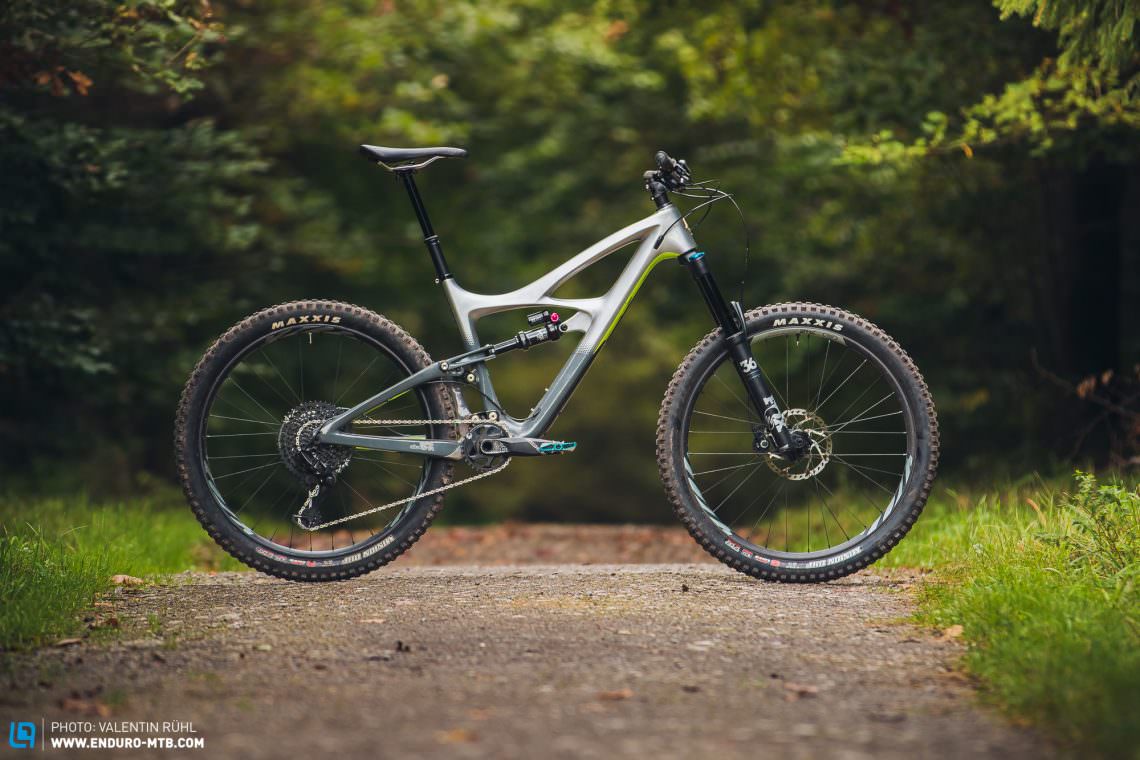
If pushed to describe the design of the Ibis Mojo HD4 in a single word, then it would probably be “organic”. The sculptured curves of the Mojo’s iconic carbon frame have become idiosyncratic to the brand since its introduction in 2005, and we are glad to see that the latest offshoot remains faithful to this design. The most noticeable surface change compared to its direct predecessor, the Mojo HD3, is the new position of the shock mount. It now allows the shock to be mounted with the piggyback at the top, thus creating more space for a water bottle in the lower front triangle.

The Ibis Mojo HD4 in Detail
Fork FOX Float 36 Performance 160 mm
Rear shock FOX Float DPX2 153 mm
Drivetrain SRAM GX Eagle
Brakes Shimano Deore
Handlebar Ibis Aluminium 780 mm
Stem Ibis 3D Forged 35 mm
Seatpost Kind Shock LEV-Si
Tires Maxxis DHF 2.6
Wheelset Ibis 742 Carbon 27.5″
In terms of componentry, besides the frame kit Ibis offers complete bikes with plenty of configuration possibilities. Our test bike came with the SRAM GX-Eagle build kit, including a FOX performance shock and Shimano M615 brakes, starting from € 5,698. It also had the optional Ibis 742 carbon wheels, which cost an additional € 900, bringing in the total at € 6,598. The HD4 is one of the first bikes on the market to come as standard with 2.6″ wide MAXXIS Minions, and the internal width of the in-house rims is 35 mm. The components, though entry-level, have been chosen sensibly. Only the small brake rotors with 180/160 mm are an absolute no-go on a bike of this calibre.
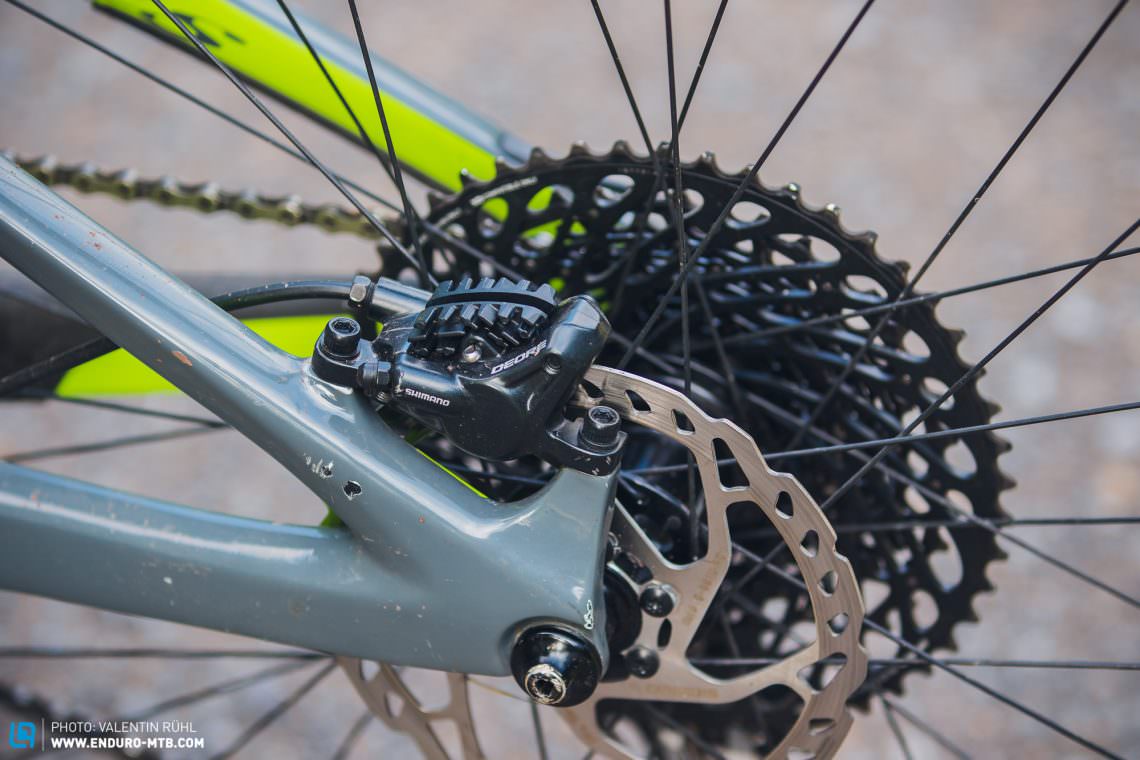
180 mm front and 160 mm rear brake rotors are completely out of place on a bike of this calibre.

The components on the bike we tested are not the best, but we quickly forgot about them on the trail and had no complaints about the SRAM GX Eagle.
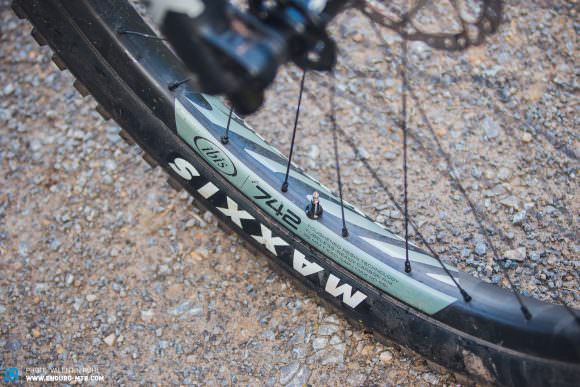
The in-house carbon wheels are available at an extra charge – whether the weight savings and the increased stiffness are worth the additional cost of € 900 remains questionable.

The shock mount has moved downwards to create space for the piggyback at the top. Now there is room for a large water bottle on the Ibis too.
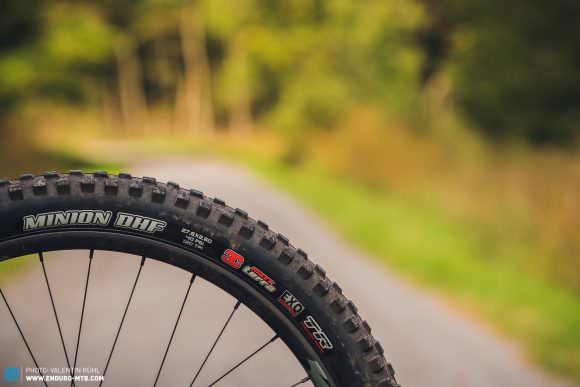
The 2.6″ wide MAXXIS tires strike a balance between classic widths and fat 2.8″ tires. Despite a few flats, the riding characteristics convinced us.
The geometry of the Ibis Mojo HD4
But enough of the superficialities, what really counts are the inner values, and with the fourth generation of the Mojo HD, the devil is in the detail, more precisely, in the geometry. In today’s enduro bike market, the HD3 always looked a bit old-fashioned: “Too short and too steep,” the critics complained – “playful and agile,” argued the fans. Whichever side you were on, the geometry of the new HD4 has been significantly revised and now follows the general long-and-slack trend. The reach grew in size large from 431 mm to 455 mm and is thus 9 mm longer than the old XL; the head angle is now 64.9°, a whopping 1.7° slacker than its predecessor at 66.6°. On paper, the HD4 should be much more stable at high speeds, thereby strongly distinguishing itself from its little brother, the 130 mm travel Mojo 3. With the new geometry, Ibis has implemented the feedback gathered from its championship winning EWS team, which was deeply involved in the developmental process.
.
| Size | S | M | L | XL |
|---|---|---|---|---|
| Seat tube | 362 mm | 393 mm | 445 mm | 483 mm |
| Top tube (effective) | 579 mm | 604 mm | 628 mm | 658 mm |
| Head tube | 87 mm | 109 mm | 126 mm | 142 mm |
| Head angle | 64.9° | 64.9° | 64.9° | 64.9° |
| Seat angle | 74° | 74° | 74° | 74° |
| Chainstays | 430 mm | 430 mm | 430 mm | 430 mm |
| BB height | 343 mm | 343 mm | 343 mm | 343 mm |
| Wheelbase | 1163 mm | 1192 mm | 1219 mm | 1251 mm |
| Reach | 415 mm | 435 mm | 455 mm | 480 mm |
| Stack | 570 mm | 590 mm | 605 mm | 620 mm |
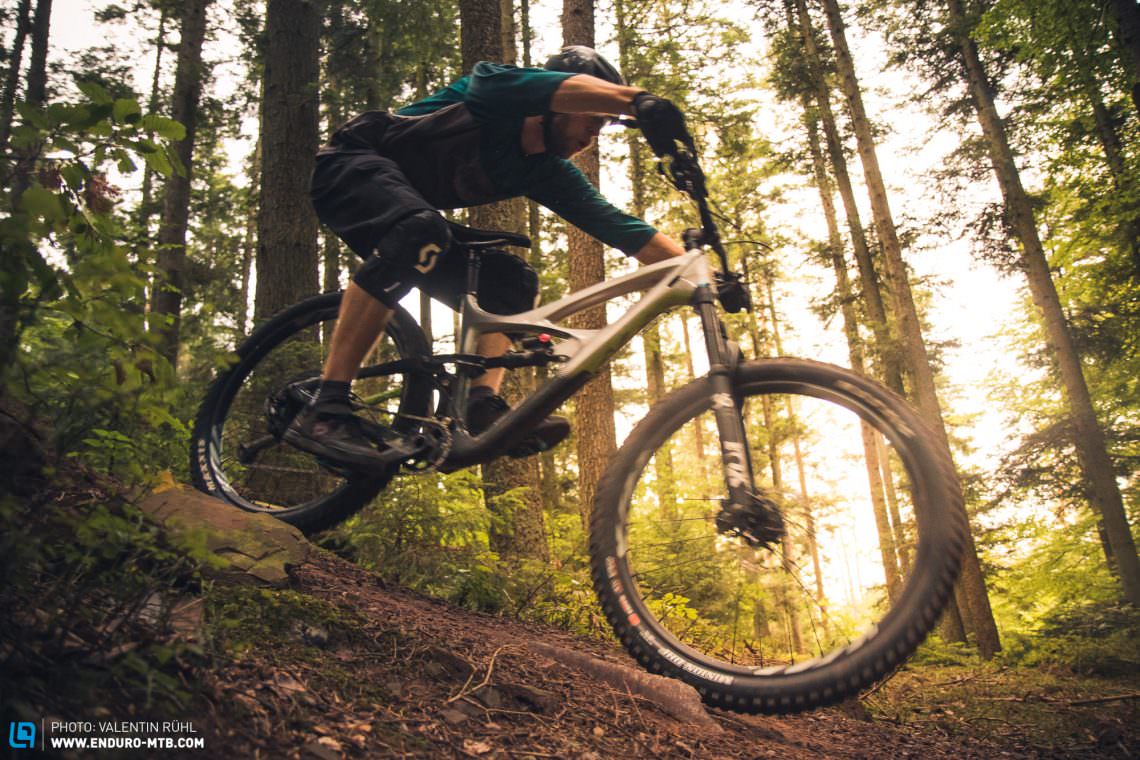
The updates of the Ibis Mojo HD4
In addition to the huge changes to the geometry, there are many small improvements in the details. The seat tube of the HD4 has been cut down (25 mm in size large) so that shorter riders too can use a 170 mm dropper post if they want. The excellent kinematics of the DW-Link rear suspension have been tuned and revised, with a more progressive ramp up towards the end of the travel offering more reserves on large hits. The linkages have been made stiffer and the carbon layup has been further optimized to increase overall stiffness. The Mojo HD4 offers room for 27.5″ tires from 2.3″ to 2.8″ wide since Ibis argues that the outer diameter of 2.8″ tires under load changes only slightly, and therefore no geometry adjustments are necessary.


The Ibis Mojo HD4 on the trail
As soon as you swing a leg over the new HD4, it becomes clear that this is a bike ready for action. The more aggressive geometry, in combination with the 2.6″ tires, cries out for full-throttle pinning through rough terrain. The geometry is still very well balanced, however. After all, the Mojo HD4 is now close to the current average in this category. Fortunately, the bike has not lost any of its pedalling efficiency. Even in this latest iteration, the HD4 climbs without any noticeable rocking with the shock fully open. Only on steep technical climbs does the slack head angle take its toll, requiring a little more rider input to keep the front wheel tracking where you want it. The Ibis clearly belongs to the better climbers amongst enduro bikes and won’t shy away from long tours.
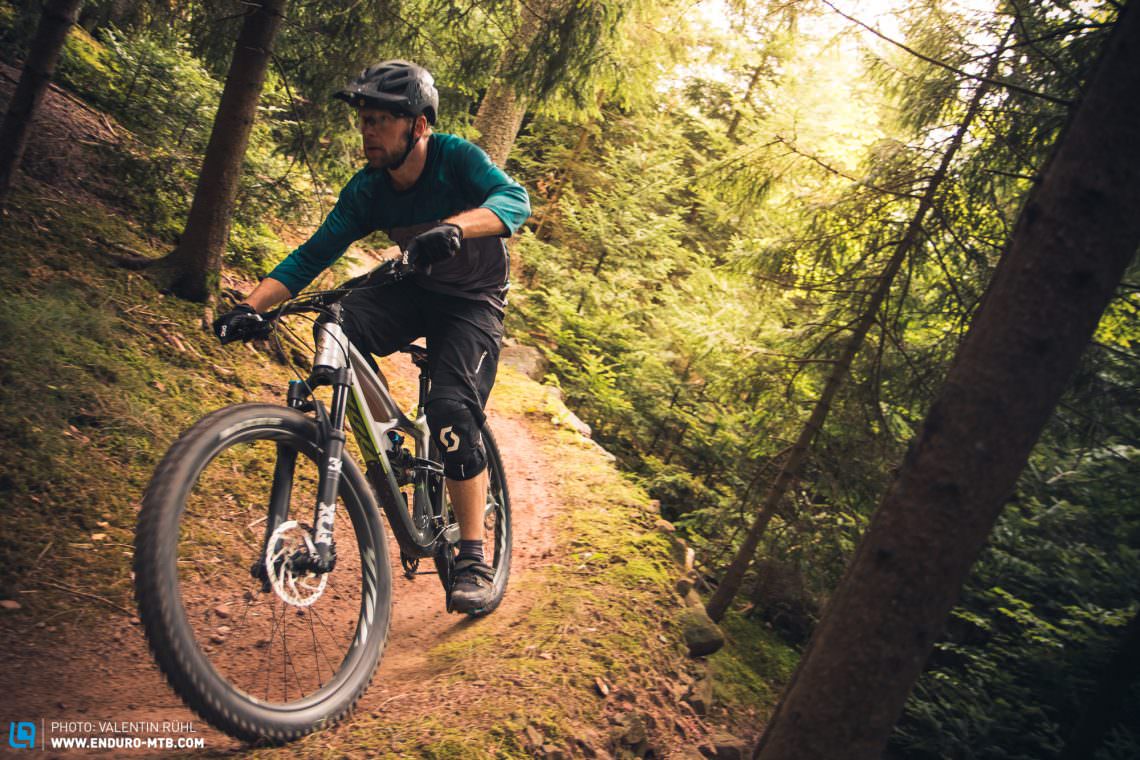
Good all-round characteristics or not, it’s the downhills that the Ibis truly longs for! The Mojo HD4 comes to life as soon as gravity takes over, filling the rider with confidence to let it charge. The new geometry offers a good mix of stability and agility – where the HD3 would have been a little nervous, the HD4 still squats firmly on the ground. A bit of the playfulness of the HD3 has been lost, but the HD4 is by no means cumbersome, offering an all rounder package in terms of handling. The DW-linkage works brilliantly, sitting rather high up in the travel which helps it forgive the occasional rider error. Due to the increased progression at the end, the rear provides sufficient pop for jumps and encourages an active riding style. Once on the trail, you will quickly forget the entry-level components, because it is just so much fun to ride!
One thing that we could not get out of our heads during the review, however, was the tires. The MAXXIS Minions are like trusty old friends, yet there have been no long-term tests of the new “intermediate size” 2.6″. Fact is, the 2.6ers are noticeably wider than the 2.5″ WT model and generate massive amounts of grip on most terrain. The riding characteristics are very dependent on the air pressure which lies, as you might have guessed, somewhere between that of classic 2.4″ and fat 2.8″ tires. Once we had the pressure down to 1.4 bar in the front and 1.6 bar in the rear, we started suffering pinch flats (despite running tubeless) and had to increase the pressure again. Nevertheless, the new 2.6″ size promises to be a very good compromise for many riders – and whoever does not like it can change to 2.4″, 2.5″ or even 2.8″ without issues.
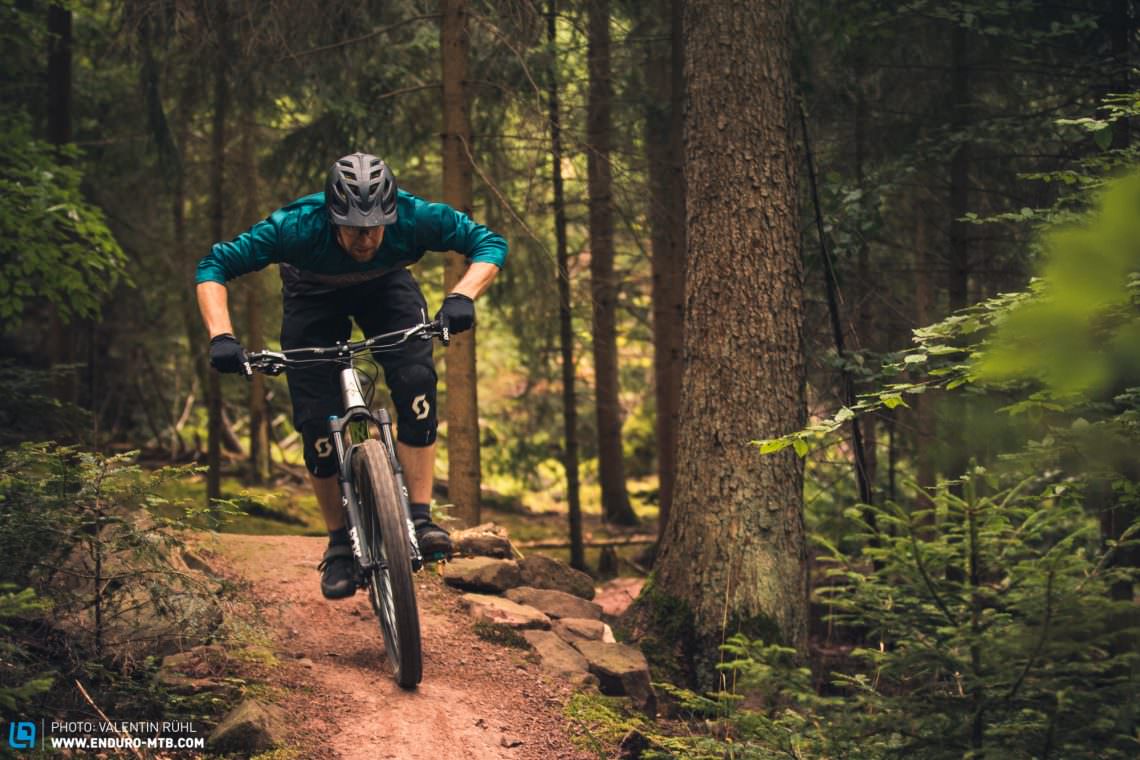
Conclusion
Not just right, dead right! On paper, the Ibis Mojo HD4 is quite average, perhaps, but in practice on the trail, it rides like anything but an average bike. The Mojo HD4 is a great all-rounder that will put a big smile on the face of any rider. The latest evolution of the Mojo HD has become much smoother and more stable, making it even faster and composed through rough terrain than its predecessor.
Pros
– confidence inspiring geometry
– outstanding suspension linkage
– great pedalling efficiency
Cons
– small brake rotors
– tires are susceptible to flats
– expensive
More info at: ibiscycles.com
This article is from ENDURO issue #030
ENDURO Mountainbike Magazine is published in a digital app format in both English and German. Download the app for iOS or Android to read all articles on your tablet or smartphone. 100% free!

Did you enjoy this article? If so, we would be stoked if you decide to support us with a monthly contribution. By becoming a supporter of ENDURO, you will help secure a sustainable future for high-quality mountain bike journalism. Click here to learn more.
Words: Photos: Valentin Rühl











